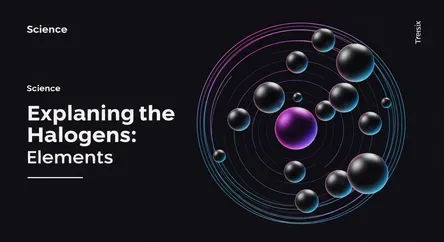Science
Explaining the Halogens: Reactive Elements

A look at the halogens, the highly reactive group of elements from the periodic table that are essential to industry and daily life.
What is it?
The halogens are a group of five chemically related, nonmetallic elements in Group 17 of the periodic table: fluorine (F), chlorine (Cl), bromine (Br), iodine (I), and astatine (At). The name "halogen" means "salt-producing" because they readily react with metals to form salts, such as sodium chloride (table salt). They are highly reactive because their atoms have seven valence electrons, just one short of a stable octet. This group is unique as it contains elements that are gases (fluorine, chlorine), a liquid (bromine), and solids (iodine, astatine) at standard temperature and pressure.
Why is it trending?
Halogens are consistently relevant due to their vast applications across science and industry. Their high reactivity makes them indispensable. Chlorine and bromine are crucial disinfectants for water purification in swimming pools and drinking water. Fluorine compounds are key in producing plastics like Teflon and separating uranium isotopes for nuclear power. Furthermore, organobromine compounds are vital as flame retardants in textiles and electronics, enhancing product safety. Their ongoing use in everything from healthcare to manufacturing keeps them at the forefront of chemical science.
How does it affect people?
Halogens have a significant and direct impact on daily life. Fluoride is added to toothpaste and water supplies to prevent tooth decay. Chlorine is not only in bleach and disinfectants but is also essential for human health in the form of chloride ions. Iodine is a critical nutrient for thyroid function and is used as an antiseptic. However, elemental halogens are toxic. Certain halogenated compounds, like chlorofluorocarbons (CFCs), have been shown to deplete the ozone layer, leading to environmental regulations. When burned, some halogen-containing materials can release toxic and corrosive gases.